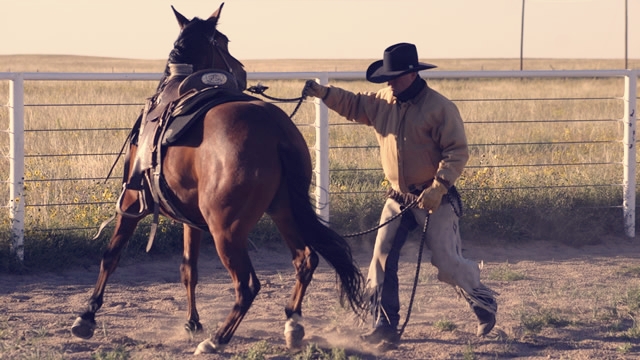Written by Martin Black
This article originally appeared in Eclectic Horseman Issue No.49
Many things have changed since I was in grade school, but one thing I remember the teachers doing was testing us with a fire drill. It was just a drill, but they made an impression that nothing less than an immediate response was acceptable. No matter what else was going on, a lesson, gym activities, or lunch in the cafeteria, we were expected to respond when the fire alarm sounded.
It was a good lesson and it taught us to do the right thing under pressure. At first it was very uncomfortable, but as time went on we learned not to worry, just respond and everything would turn out all right.
When the bell would sound the teacher wanted an immediate response. If anyone was preparing otherwise, they may be dragged away and forced to keep up with the others going out the door. There was no time for compromise, rationalizing, or analyzing how we “feel” about it. We had to just get out of the room. They didn’t want us thinking about it; just do it and do it now. What we learned was to trust their judgment, and have confidence that they were looking out for our best interests. They were not being abusive or mean. We learned to think in a panic situation and that can only be taught in a panic situation.
We were not offered a “soft feel,” they didn’t “wait on our feet,” they made sure we got from point A to point B. They made sure nobody had a nervous breakdown over it, but the point was to teach us to handle pressure. They would put the right amount of pressure on us, just short of panicking us.
This was for our safety in case we should ever find ourselves in a dangerous situation. We learned to make happen what needed to happen in spite of anything else. We became confident how to respond to something that was originally confusing and intimidating.
I find this is a valuable lesson for our horses to experience. It can be very dangerous when a horse panics and doesn’t respond properly during the confusion, anxiety, loud noises or whatever may create some uncertainty. There is a lot of value in taking the time to fix a situation up for a horse so he can think his way through and find his way out, and we should be doing that most of the time. But we should at some point, preferably before he experiences being caught in a burning building, expose him to a panic situation where we can have control of the level of intensity and show him the proper response.
He can learn to follow our guidance no matter what, learn that when we ask for a change of speed, faster or slower, or change of direction, he can do it. We need to be careful that we don’t expose the horse to more than he can handle, but we need to expose him to enough to know how much he can handle.
Whether we are preparing a horse for a competitive performance field or just to perform safely in an unsafe situation he can learn to reach inside himself and find what it takes when the occasion arises.
This is done by successful experiences, showing him how to get out of the building at the first sign of a fire. But just as important, we may not always need to exit. If a tornado horn sounds, we need to dig in and find the cellar or basement. This is why we need to be able to guide him under pressure, instead of him reacting with a trained response.
If he can experience following our guidance under pressure situations and trust our guidance in different situations then he can develop the confidence and good judgment needed for a variety of circumstances.
If the horse gets upset and we remove the stimulus or circumstance that caused the rise in emotion, the horse just learns to be a cry baby. Anytime he starts to become uneasy he overdramatizes it to get the comfort situation back. He gets the people trained. This is not how the real world works, and this can in some situations become more dangerous for the horse. Horses don’t develop being cry babies from other horses; they learn to adjust to situations. When the horse that has developed this kind of judgment learned from people has to get along with other horses, he is insecure, anxious, aggressive or timid.
Horses are wired to find their place in the pecking order with other horses and nature in general. We don’t need to rewrite the laws of nature, just help them learn how they apply in man’s world. A horse learns to be content with his circumstances; our protecting him can sometimes confuse him because it’s inconsistent with what he knows. He learns how to respond to avoid trouble with other horses. Sometimes it may be flight, another time fight or another time accept or tolerate it like bad weather.
Again, being soft and gentle with our horse can be productive in his training; it feels good to the horse and the person. But if we want to prepare him for the front lines we are not going to go through boot camp singing songs and painting sunsets.
If we can expose him to frightful or difficult situations once in a while, and he learns where to reach in his backpack for the tool to deal with it, we are doing him a favor, in my opinion.
This article originally appeared in Eclectic Horseman Issue No.49
https://eclectic-horseman.com/mercantile/horse-training-dvds/groundwork/martin-black-colt-starting-groundwork-with-students/


